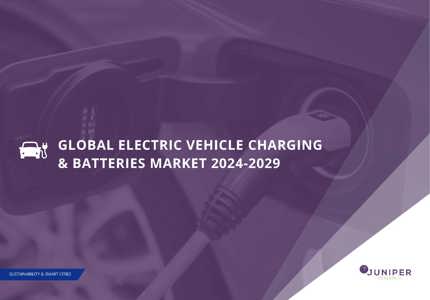What Battery Technologies Will Power the Electric Vehicle Revolution?
The growing demand and adoption rates of EVs (electric vehicles) means that battery manufacture levels need to rise considerably in the coming years, which will push manufacturers to find more cost-effective and scalable solutions for battery production.
But what battery technologies lend themselves to EVs? And how are they being refined to meet the changing performance and vehicle range demands?
Lithium-ion Batteries
Lithium-ion batteries are widely used in consumer electronics due to their high energy generation capabilities compared to their size and weight. Their higher energy efficiency, low self-discharge, and high temperature performance, as well as relative stability vis-à-vis other batteries make them the best available solution in the EV market. Most components of lithium-ion batteries can also be recycled, however, as was discussed briefly, the cost of repurposing and utilising recycled batteries remains a complex issue.
Furthermore, standardisation and regulation of recycling needs to be ensured. Carbon emissions involving recycling and repurposing processes should not cause other environmental hazards; defeating their purpose. Perhaps the most essential consideration is the dependency on mining materials, especially cobalt and nickel.
Numerous OEMs, including Tesla and Ford, have opted for LFP (Lithium-Iron-Phosphate) batteries in some of their EVs. For instance, Tesla used them in all its standard-range vehicles. These batteries are significantly cheaper but less energy dense, widely used in EV manufacturing in China. Ford has opted for batteries with a higher percentage of energy-dense nickel for its forthcoming electric pick-up truck. It is likely that lithium-ion and its variations will continue to dominate the EV battery market for the next decade, as they remain the most commercially viable EV battery solution and provide a reliable base of research for new battery technologies.
Solid-state Batteries
Emerging as a potential alternative to lithium-ion batteries in recent years, solid-state batteries currently possess lower technology maturity and market readiness in comparison to their counterparts. These batteries pack solid electrolytes rather than liquid ones; decreasing volatility and ultimately risks associated with lithium-ion batteries. Moreover, they are capable of holding more energy compared to lithium-ion ones with better performance at both low and high temperatures.
Nickel-metal Hydride Batteries
Nickel-metal hydride batteries are batteries which yield better energy compared to lead-acid batteries and are used in numerous PHEVs; having longer lifecycles. They are also safer and more abuse tolerant, compared to both lead-acid and lithium-ion batteries. The reasons why nickel-metal hydride batteries remained only as an alternative to other EV battery solutions are their high costs of production for EVs and poorer performance in self-discharge.
In addition, although they are more abuse tolerant, these batteries generate heat in high temperatures and overcharging can potentially cause hydrogen to form; damaging the battery cells. In such cases, batteries release hydrogen gas, which needs to be controlled.
Lead-acid Batteries
Widely used in ICE vehicles as starting batteries, lead-acid batteries are inexpensive and safe battery options. However, their low energy density and short lifecycles, as well as poor performance under cold temperatures make them secondary energy sources/ancillary loads to be utilised in EVs, even though advancements in their technology have been made. Lead-acid batteries are therefore best used as deep-cycle batteries in applications requiring regular battery discharge.
Moreover, since lead is hazardous to human health and the environment, and carries risks inherent to its chemical composure, recycling of lead-acid batteries is not simple. Although lead can be reclaimed, reusing/repurposing batteries, lending themselves to other applications ie powering microgrids) remains limited.
Ultracapacitors
Although ultracapacitors are not batteries per se, they provide energy storage capacity. This is achieved by storing energy in a polarised liquid between the electrode and electrolyte; meaning electrostatically rather than chemically. Energy storage capacity increases when the liquid’s surface increases, however, they are able to store less energy than a similar-sized battery. Ultracapacitors can discharge energy more rapidly and thus are better suited to uses requiring rapid charge and discharge cycles, since such discharge is an electrostatic event.
They can be utilised to provide EVs with additional power when driving, such as when accelerating and climbing hills, as well as assisting in recovering braking energy. As such, they are useful as a secondary source of power and storage, thanks to their ability to assist other batteries levelling their loads. Ultracapacitors are utilised in numerous PHEVs, especially in improving start and stop features and acceleration performance.
Zebra Batteries
Zebra batteries are sodium-nickel chloride batteries that are cheaper than lithium-ion batteries but have lower specific power. They were initially developed to power grids, mining materials, and train locomotives (as was with the case of General Electric’s sodium-nickel-chloride Durathon batteries), and were then used to power numerous early EV concept cars and public transport vehicles. Despite their high energy density, lower discharge rate and weight, one important setback for these batteries is their temperature to operate at maximum efficiency (270°C-350°C); making them safer and more viable for public transport.
Our latest research found:
- The volume of electric vehicle battery pack shipments will reach 30 million in 2027; from just 10 million in 2022.
- Falling vehicle costs, often directly caused by government subsidies, and increasing awareness around the environmental impact of current mobility services are key drivers behind the growth in electric vehicle battery production. This growth will be strongest within the commercial segment, with commercial electric vehicle battery pack shipments growing from 1.4 million in 2022 to over 7 million by 2027.
- Mass electrification of fleet vehicles is required for meeting corporate decarbonisation goals and will drive investment into electric vehicles from enterprises. In turn, this provides an opportunity for manufacturers to develop batteries designed for energy-intensive commercial use cases.
- For electric vehicles to reach mass adoption across commercial use cases, including heavy goods haulage and passenger transport, scaling the production of new battery technologies is essential. This includes solid state batteries and new chemical mixes.
- The most pressing issue for electric vehicle adoption is the rare earth minerals required in battery production, including cobalt, which is difficult to source, in terms of both cost and the ethics around procurement.
- Accordingly, manufacturers must rapidly move to new, higher capacity technologies including solid-state batteries to unlock energy intensive use cases. However, these changes in technologies must continue to prioritise the sustainability goals electrification is based upon.
Latest research, whitepapers & press releases
-
 ReportDecember 2025
ReportDecember 2025AI Agents for Customer Experience Platforms Market: 2025-2030
Our comprehensive AI Agents for Customer Experience Platforms research suite comprises detailed assessment of a market that is set to disrupt mobile communications. It provides stakeholders with insight into the key opportunities within the AI agents for customer experience platforms market over the next two years.
VIEW -
 ReportDecember 2025Fintech & Payments
ReportDecember 2025Fintech & PaymentseCommerce Fraud Prevention Market: 2025-2030
Our eCommerce Fraud Prevention research suite provides a detailed and insightful analysis of this evolving market; enabling stakeholders from financial institutions, law enforcement agencies, regulatory bodies and technology vendors to understand future growth, key trends, and the competitive environment.
VIEW -
 ReportNovember 2025Telecoms & Connectivity
ReportNovember 2025Telecoms & ConnectivityeSIMs & iSIMs Market: 2025-2030
Juniper Research’s eSIMs and iSIMs research suite offers insightful analysis of a market set to experience significant growth in the next five years. The research suite provides mobile network operators (MNOs), original equipment manufacturers (OEMs), and eSIM management and platforms vendors with intelligence on how to capitalise on the market growth, and guidance on how eSIM-only devices and sensors, SGP.42, in-factory provisioning, and iSIMs will change the competitive landscape.
VIEW -
 ReportNovember 2025Fintech & Payments
ReportNovember 2025Fintech & PaymentsModern Card Issuing Platforms Market: 2025-2030
Our Modern Card Issuing Platforms Market research suite provides a detailed and insightful analysis of this evolving market; enabling stakeholders from banks, financial institutions, fintech companies, and technology vendors to understand future growth, key trends, and the competitive environment.
VIEW -
 ReportNovember 2025Fintech & Payments
ReportNovember 2025Fintech & PaymentsDigital Wallets Market: 2025-2030
Our digital wallets research suite provides detailed analysis of this rapidly changing market; allowing digital wallet providers to gain an understanding of key payment trends and challenges, potential growth opportunities, and the competitive environment.
VIEW -
 ReportOctober 2025Fintech & Payments
ReportOctober 2025Fintech & PaymentsDigital Identity Market: 2025-2030
Juniper Research’s Digital Identity research suite provides a comprehensive and insightful analysis of this market; enabling stakeholders, including digital identity platform providers, digital identity verification providers, government agencies, banks, and many others, to understand future growth, key trends, and the competitive environment.
VIEW
-
 WhitepaperDecember 2025Telecoms & Connectivity
WhitepaperDecember 2025Telecoms & ConnectivityHuman + AI: Drivers of Customer Experience AI Agents in 2026
Our complimentary whitepaper, Human + AI: Drivers of Customer Experience AI Agents in 2026, examines the key drivers of the AI agents for customer experience platforms market in 2025.
VIEW -
 WhitepaperDecember 2025Fintech & Payments
WhitepaperDecember 2025Fintech & PaymentsBeyond Chargebacks: The True Cost of Fraud for Digital Commerce
Our complimentary whitepaper, Beyond Chargebacks: The True Cost of Fraud for Digital Commerce, examines the state of the eCommerce fraud prevention market; considering the impact of evolving digital fraud strategies, including key trends such as identity theft, account takeovers, chargebacks, policy abuse and friendly fraud.
VIEW -
 WhitepaperNovember 2025Telecoms & Connectivity
WhitepaperNovember 2025Telecoms & ConnectivityeSIM-only Devices: The Impact on Operators, Consumers, and IoT
Our complimentary whitepaper, eSIM-only Devices: The Impact on Operators, Consumers, and IoT, explores the challenges and opportunities for the three segments, with a particular focus on eSIM-only smartphones and SGP.42.
VIEW -
 WhitepaperNovember 2025Fintech & Payments
WhitepaperNovember 2025Fintech & PaymentsUnlocking the Next Stage of Growth for Modern Card Issuing Platforms
This free whitepaper analyses key trends shaping the modern card issuing space, and the ways in which modern card issuing platforms can capture growth.
VIEW -
 WhitepaperNovember 2025Fintech & Payments
WhitepaperNovember 2025Fintech & PaymentsTop 10 Fintech & Payments Trends 2026
Fintech is evolving fast. From stablecoins to agentic AI, our annual guide reveals the shifts redefining payments, digital identity, and the future of money in 2026. Download your copy today.
VIEW -
 WhitepaperNovember 2025Fintech & Payments
WhitepaperNovember 2025Fintech & PaymentsDigital Wallets: Empowering Financial Inclusivity
Our complimentary whitepaper, Digital Wallets: Empowering Financial Inclusivity, examines the state of the digital wallets market; considering the impact of digital wallets on different geographies, how they are shaping the modern payments landscape through lower transaction fees and promoting financial inclusivity for underbanked populations, and how they are competing with established payment methods.
VIEW
-
Fintech & Payments
Digital Identity App Usage to Hit 6.2 Billion by 2030, Driven by Shift to Decentralised Models
December 2025 -
Telecoms & Connectivity
Travel eSIM Margins Under Pressure as Revenue per Gigabyte Falls 10% Globally in Two Years
December 2025 -
Telecoms & Connectivity
AI Agents to Power 1,000% More Customer Interactions for Enterprises Globally by 2027
December 2025 -
IoT & Emerging Technology
Global D2C Revenue Set for $370 Million Surge, But Satellite Operators Should Not Chase Full MNO Status
December 2025 -
Fintech & Payments
Digital Goods Fraud to Cost eCommerce Merchants $27 Billion Globally by 2030 as AI Tools Accelerate Attacks
December 2025 -
Fintech & Payments
AML Adoption to Hit 3.8 Million Businesses Globally by 2030, With Europe at the Forefront
November 2025





















